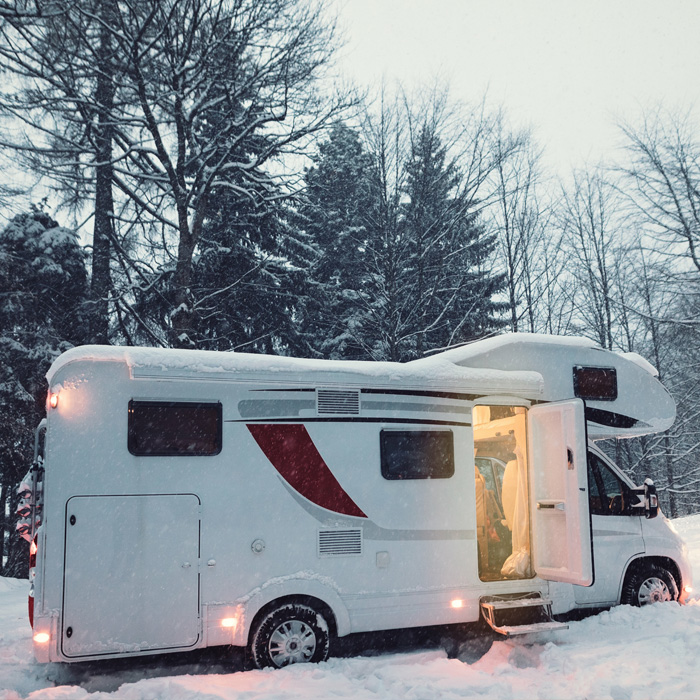Winterizing Your RV: A Comprehensive Guide for a Cozy Season at our College Station
RV Park
Fall turns to Winter at Texas RV Parks
As the leaves fall and temperatures drop, RV enthusiasts face the challenge of preparing their cherished homes on wheels for the colder months. Whether you’re a full-time RVer embracing a winter stay or simply storing your rig until the arrival of spring, thorough winterization is paramount to protect your investment and ensure a seamless return to the open road. In this detailed guide, we’ll walk you through the essential steps to winterize your RV at an RV park, taking into consideration the unique considerations that come with stationary winter living. So, if you’re currently looking for a warm spot at Hardy’s RV Resorts to call your temporary home thi winter, you’re in the right place! Read on for comprehensive tips and insights.
1. Inspect and Seal:
Begin the winterization process with a meticulous inspection of your RV. Carefully examine the exterior for any signs of wear, leaks, or damage. Check windows, doors, and seams for gaps, and use high-quality silicone caulk or weatherstripping to seal any potential entry points for cold air. Proper insulation is key to maintaining a warm and energy-efficient interior during the winter months. Ensuring a well-sealed RV not only helps with temperature control but also minimizes the risk of pests finding their way inside during the colder months.
2. Water System Winterization:
Protecting your RV’s water system is crucial to prevent frozen pipes and potential damage. Start by draining the fresh water tank and water heater. Open all faucets, including hot and cold water, as well as low-point drains to ensure complete water removal. Use non-toxic RV
antifreeze to fill the water lines, ensuring all components of the plumbing system are protected from freezing temperatures. Remember to bypass the water heater when pumping antifreeze through the system to avoid unnecessary waste.
3. Propane Refill:
The propane system plays a vital role in keeping your RV warm during the winter. Inspect the furnace, stove, and other propane appliances for any issues. Check propane levels and consider filling up the tank before winter sets in. Keep in mind that propane is a valuable resource for heating your RV, so it’s essential to have enough to last through the winter. If you plan on using your RV’s furnace regularly, it may be beneficial to carry an extra propane tank. Ensure your propane system is in top shape for a cozy stay.
4. Interior Preparations:
Prepare the interior of your RV for the winter by removing any perishable items and liquids that could freeze. Pay special attention to items in cabinets, as temperature fluctuations can impact their integrity. Consider using moisture absorbers throughout the RV to prevent condensation, which can lead to mold and mildew. Leaving cabinet doors and drawers open will promote air circulation and help maintain a fresh interior. Don’t forget to insulate windows with thermal curtains or additional coverings for added warmth.
5. Exterior Protection:
Invest in a high-quality RV cover to shield your rig from the harsh winter elements. A well-fitted cover will protect against snow, ice, and UV rays, extending the life of your RV’s exterior. If you’re staying in an area with heavy snowfall, consider using additional supports to prevent snow accumulation on the roof. Additionally, regularly remove any accumulated snow from the roof to prevent excessive weight and potential damage. Proper exterior protection not only preserves your RV but also makes for an easier transition when it’s time to hit the road again.
6. Battery Care:
Cold temperatures can be harsh on RV batteries. To extend their life, disconnect and remove the batteries, storing them in a cool but not freezing location. Consider using a battery maintainer to keep them charged throughout the winter. Periodically check the battery voltage and recharge as needed. This precaution will ensure your batteries are in optimal condition when it’s time to hit the road again. A well-maintained battery is essential for powering your RV’s lights, appliances, and systems.
7. Tire Maintenance:
Check your RV’s tire pressure and, if possible, elevate the tires off the ground using leveling blocks. This helps prevent flat spots and uneven tire wear during extended periods of inactivity. Covering the tires with durable tire covers can also protect them from the winter weather, including UV rays and potential cracking due to cold temperatures. Proper tire maintenance is crucial for a safe and smooth return to the road.
8. Regular Check-ins:
Even when your RV is in storage, it’s important to check on it periodically. Plan regular visits to the RV park to inspect for any signs of issues or damage. This proactive approach can help you catch and address problems early, ensuring a smoother transition when you’re ready to hit the road again. During your check-ins, take the opportunity to air out the RV, run appliances briefly, and check for any unwanted guests, such as pests. Regular check-ins also allow you to maintain a connection with your RV community at the park.
Conclusion:
Winterizing your camper at an RV park College Station demands careful planning and attention to detail, but the effort pays off in the long run by protecting your valuable investment. By following these comprehensive steps, you’ll be well-prepared to face the winter months and enjoy a cozy season in your mobile home. So, whether you’re seeking an ‘RV park near me’ for a winter retreat or looking for a temporary haven at a place like Hardy’s Landing, these tips will ensure your RV is ready for a season of warmth and comfort. As the snow blankets the world outside, you can relax in the warmth of your RV, knowing that it’s well-prepared for the colder months. Safe travels and happy winter adventuring!
